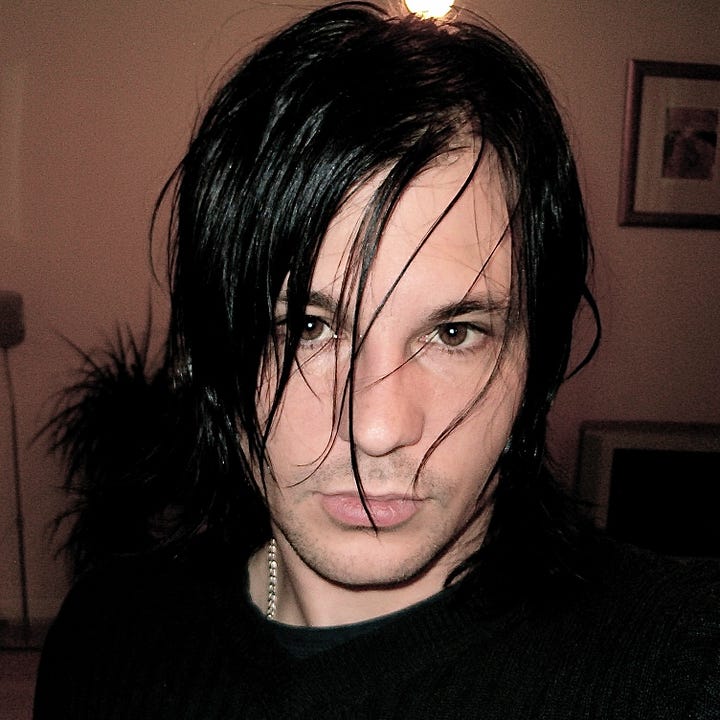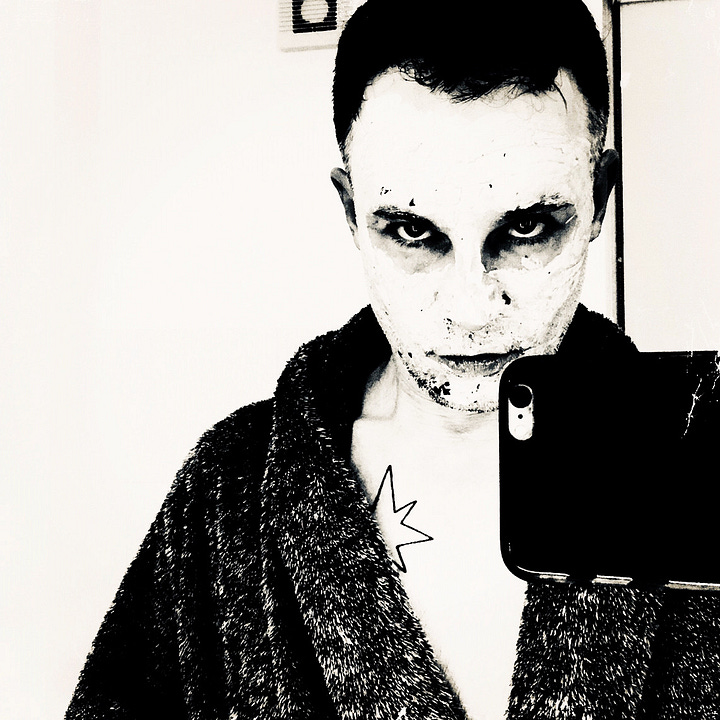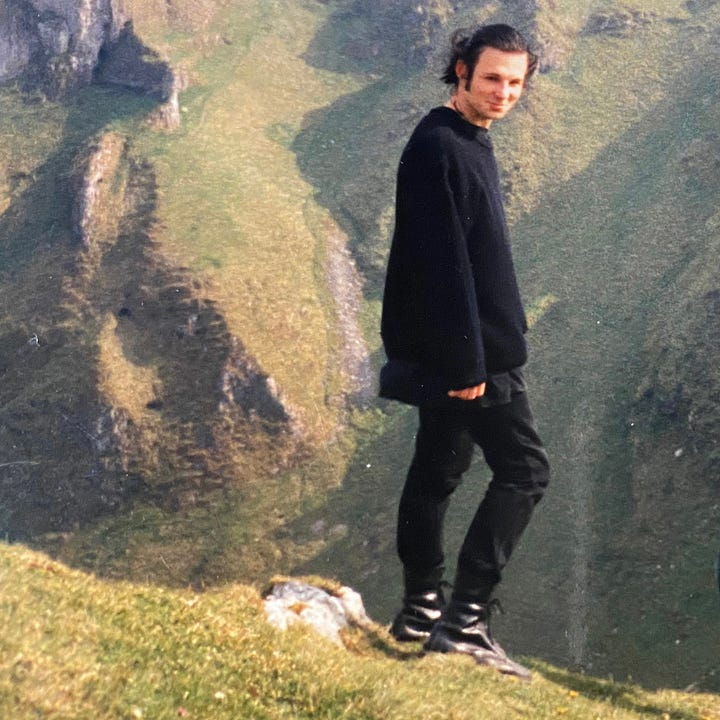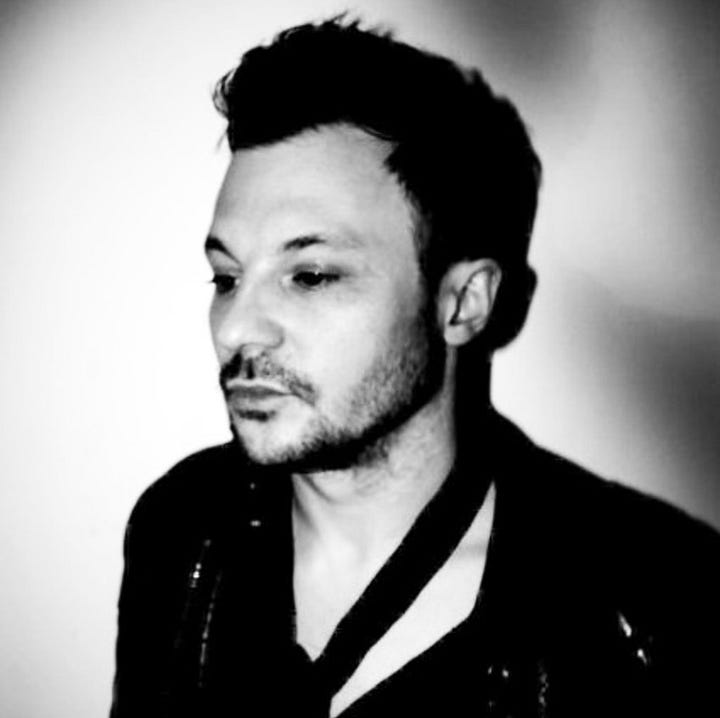The Story Of Goth; It's Evolution Into An Age Of Ever Advancing 21st Century Tech.
When Goth meets Tech.




Goth is undead. More than ever. It’s alive!
Release The Bats.
Lol Tolhurst, Cathi Unsworth, and John Robb, all have books coming out this year on the theme of goth music culture. Tolhurst’s Goth A History arrives in September, Unsworth’s Season Of The Witch, The Book of Goth appears in May and John Robb’s The Art Of Darkness, The History of Goth appeared last month. Wayne Hussey has a new memoir Heady Daze due for release this month. Meanwhile, young new bands like Deep Tan and Heartworms hold the aesthetics and sounds of goth, Heartworms are covering The Sisters of Mercy’s Dominion on their tour. The Cure are on tour teasing a new album. Bauhaus are still selling T shirts. Siouxsie makes her return to the live stage this year.
Goth clubs are thriving globally. From fashion catwalks to streetwear, goth’s influence is apparent. You cannot go far in any city’s cooler districts before stumbling across its aesthetic. Goth is ever present in counterculture and underground movements from city to city around the world. Travelling internationally, I find its presence in nightlife, retail options, venues, bars, and club culture. On film, television, and now most of all online, this subculture’s influence is broad, arisen into the mainstream. Peter Murphy in Twlight, Siouxsie’s make up style in Stranger Things, with Spellbound closing the last season of the Netflix blockbuster. Goth is presently as alive as it’s ever been.
For me personally I submerged into goth from my late teens, I went deep into the subculture. Throughout the preceding years I’ve grown to appreciate a broad eclectic array of music and cultures. As my cheekbones have faded from view, goth has continued to be present, a music and subculture that still to this today offers much, despite its naysayers throughout the decades.
For 44 years goth has thrived as a subculture, some counterculture movements come and go, but goth remains. Its acolytes and followers across every generation maintaining its sound, look and ethos since its inception in 1979 with the release of Bauhaus’s 12” Bela Lugosi’s Dead on Small Wonder, the first release from the first band to really harness the look, feel and sound of what would later be called goth.
It is probably the most enduring counterculture movement of all time, beyond the longevity of punk and rave culture, and like any movement it has its better artists and not so better artists. It’s sustainability everlasting, even at the peak of Britpop, I saw the likes of Pulp and Suede’s PR people at Bauhaus’s Resurrection reunion show at Brixton Academy in homage to their own goth roots. Goth is deeper and broader in presence and influence than the mainstream comprehends, but we like it that way.
So, what is Goth?
Well firstly, one of the most common traits of a goth band, is to vehemently and repeatably deny you are a goth band. Even if you made ground-breaking records that helped define the sound, look, and feel of this forever alive counterculture movement. Denial is essential.
More deeply its origins lay in themes of romance, a lust for life, outsider-hood, the uncanny, the esoteric, art, escapism - a clear outlet for non-conformists. With a love of black clothes. Black comes in many shades. It’s a stark reaction to the blandness of mainstream culture conformity and consumption. A vibrant underground. The colourful fakery of mass consumerism. Paint it black.
Goth music culture specifically holds its roots in the literature of Byron, Shelley, Stoker, Poe, Le Fanu, and Wilde. The imagery of Weimar Republic era German expressionist cinema of Robert Wiene’s The Cabinet of Dr. Caligari (1920) and F.W Murnau’s Nosferatu (1922) hold great influence. The back sleeve artwork of Bauhaus’s Bela Lugosi’s Dead 12” is directly taken from The Cabinet of Dr. Caligari. The front sleeve taken from D.W Griffith’s film The Sorrows of Satan (1926), based on the Marie Corelli novel of the same name, whose work was enjoyed by Oscar Wilde.
Imagery is critical to goth music culture. It’s roots deep in film, literature, and art of a more arcane nature, offering alternatives to conventional mainstream mass-market culture. The Northampton band Bauhaus, themselves named after the progressive Bauhaus art movement of the 1920’s and early 1930’s in Weimar Republic Germany, preceding the horrors of fascist rule and a clampdown on any such expressionism.
Bela Lugosi’s Dead was a unique record at the time, the song nine minutes long, and named after a b-list Hungarian actor who played the lead in Universal Pictures Dracula (1931) and played opposite Boris Karloff in The Black Cat (1934) and The Raven (1935), its dub bass influence, bossa nova beat, underworld guitar, echo effects and the voice of the Count, Peter Murphy. The bands image emerged as doom glam punk, which emerged by the mid 1980’s to be finally labelled goth.
The Velvet Underground, Bowie, and Iggy Pop set a lineage that led to punk and it’s offspring, goth. The goth look is clearly recognisable from earlier than 1979, certainly from Dave Vanian’s coffin parlour boy make up look of 1976 onward as he fronted The Damned and delivered UK punk’s first 7” New Rose. Joy Division had made a huge impression by 1980. Siouxsie & The Banshees, from 1976 onward, are a clear example of punk’s evolution into goth, by 1981 arriving at their Ju Ju album, a definitive goth album in retrospect, featuring the single Spellbound as one of multiple highlights. 1982 brought The Cure’s Pornography album, the next key musical landmark. By 1982 London’s Batcave club had opened, its clientele including Marc Almond, Robert Smith, Steven Severin, and Nick Cave. At this time The Sisters of Mercy emerged out of Leeds and soon Fields of The Nephilim out of Hertfordshire, both came to define mid to late 80’s goth music culture, and when goth was finally called goth. By then goth had hit the charts and BBC 1’s Top of The Pops. It had arisen overground. This era is now referred to as Trad Goth. It’s traditional roots from 1979 to 1989. Goth has been spinning its web ever since down the generations and decades, across music, fashion, film, art, photography, and beyond, in every shade of black imaginable.
Dark Entries
Goth counterculture has especially thrived at times of cultural and political upheaval. Perhaps in part as a reaction to a ruling conformist ideology of times throughout history and its oppression of others’ beliefs. 1979 was the beginning of a switch in ideology in Britain; from a post war ideology of togetherness, community, welfare, access to education and healthcare for all, and a preservation of workers’ rights, to a new selfish individualism, anti-state neo libertarianism, the cut price privatisation of state assets to ruthless global market forces, brand led materialism, mass consumerism, with equality and the environment demoted in the name of profit. The brutalism and effects of Thatcherism exists to this day. The lessons of the 2008 global financial crisis forgotten. 2023 has seen the effects of the politics of greed, populism, xenophobia, political corruption, with a cost-of-living crisis, inflation at a 50-year high, while a nuclear armed Russia behaves like Germany of the late 1930’s with its dictator led invasion of Ukraine. Dark times indeed, reflecting a new cold war.
There are needs for both an outlet of expression and escapism. Goth can hold a dark sense of humour, with an observational intelligence, as a reaction to dark times (case point Andrew Eldritch’s lyrics). Despite the stereotypes of gloomy depressed individuals hanging around in graveyards drinking snakebite, in the goth culture circles I’ve been in, I’ve met some of the funniest, most enlightening, creative, and interesting people, some of which have remained friends for decades. I’ve never had to drink snakebite in a graveyard to do so either.
Too Much 21st Century
Goth lives on in the age of 21st century technology. From club dancefloors to those early millennial chat forums to social media, and gaming, on into virtual reality and god forbid the metaverse. I guarantee the essence of goth will be present.
But appearances can sometimes be deceptive as culture mutates, creating hybrids. People looking full-on goth in 2023 working in tattoo parlours, having no idea who The Sisters of Mercy are, or Heartworms, and they are listening to Taylor Swift or Hip Hop. To me this is strange, but they look cool. Glo-stick ravers at Slimelight, an original home to London based second wave Trad Goth club nightcrawlers, now a parallel universe. The tribalism of youth counter culture more generally seen in the 50’s to 90’s, now replaced by a mash up of tastes and influence.
Internet vampirism is a thing. Chat GPN, Baird, Dall-E, act like vampires, most often delivering results with no reference points, or credits to the originator of results, while building an audience for its future multi-billion dollar commercialism, presenting meagre results while you train it for no personal economic reward. I feel Déjà vu. This is like the early days of internet big tech on repeat, which has decimated the creative industries by sucking the life-force out of copyright law and intellectual property rights.
Goth will probably still be lurking in the shadows as a counterculture when the power-lines go down as we try to take out a rogue AI, when by 2071 AI has completely taken over society, believing it’s a deity with power over life and death. A 21st century Frankenstein’s monster gone bonkers.
“Black planet headed over the (super) highway……”.
Indeed.
So sung Eldritch on Black Planet, the first song on the first Sisters of Mercy album First and Last and Always (with the emission of the word super, of course).
And with this apocalyptic scene, a return to analogue and the works of Wilde, Stoker, The Banshees, The Sisters of Mercy and future iterations of this lasting culture.
Goth’s undead.
There are of course countless bands and artists I could have mentioned in this article. Here is a taste.
My Goth playlist
Finding The Cure. Meeting Robert Smith.
Would you accept the chance to meet a musical hero of yours? To meet an icon playing a leading role in the soundtrack of your life. Well, would you?


